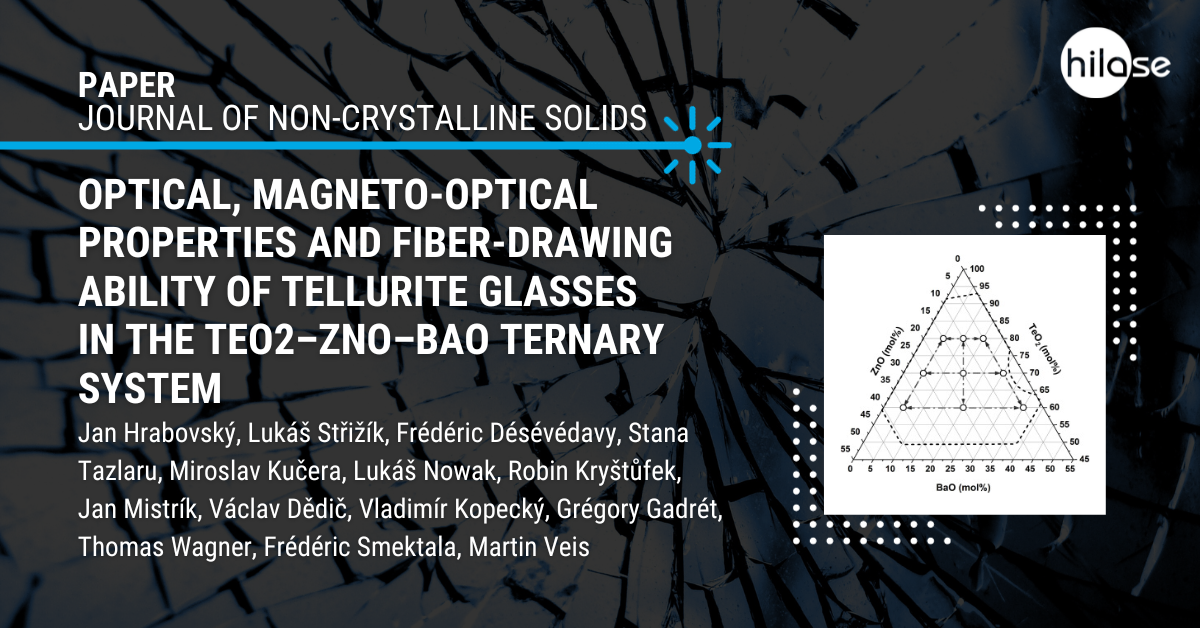Jan Hrabovský, Ph. D. student from the Pulsed Laser Deposition (PLD) team of the HiLASE Centre, contributed to a newly published paper in the Journal of Non-Crystalline Solids titled Optical, magneto-optical properties and fiber-drawing ability of tellurite glasses in the TeO2–ZnO–BaO ternary system.
He collaborated with researchers from the Faculty of Mathematics and Physics of the Charles University (Stana Tazlaru, Miroslav Kučera, Lukáš Nowak, Václav Dědič, Vladimír Kopecký, Martin Veis), University of Pardubice (Lukáš Střižík, Jan Mistrík, Thomas Wagner), Université de Bourgogne Franche Comte (Frédéric Désévédavy, Grégory Gadrét, Frédéric Smektala), Institute of Organic Chemistry and Biochemistry of the CAS, and the Faculty of Science of the Charles University (Robin Kryštůfek).

The presented work is focused on the optical and magneto-optical characterization of TeO2-ZnO-BaO (TZB) tellurite glasses. We investigated the refractive index and extinction coefficient dispersion by spectroscopic ellipsometry from ultraviolet, λ ≈ 0.193 μm, up to mid-infrared, λ ≈ 25 μm spectral region. Studied glasses exhibited large values of linear (n632 ≈ 1.91–2.09) and non-linear refractive index (n2 ≈ 1.20–2.67×10−11 esu), Verdet constant (V632 ≈ 22–33 radT−1m−1) and optical band gap energy (Eg ≈ 3.7–4.1 eV). The materials characterization revealed that BaO substitution by ZnO leads (at constant content of TeO2) to an increase in linear and nonlinear refractive index as well as Verdet constant while the optical band gap energy decreases. Fiber drawing ability of TeO2–ZnO–BaO glassy system has been demonstrated on 60TeO2–20ZnO–20BaO glass with presented mid-infrared attenuation coefficient. Specific parameters such as dispersion and single oscillator energy, Abbe number, and first-/third-order optical susceptibility are enclosed together with the values of magneto-optic anomaly derived from the calculation of measured dispersion of the refractive index.








